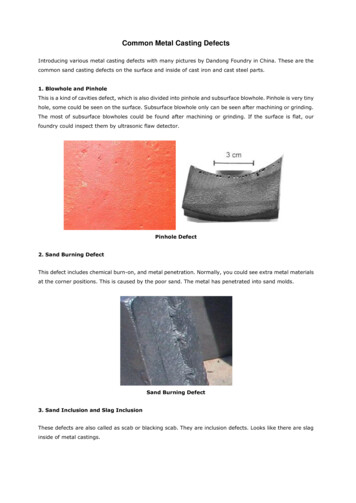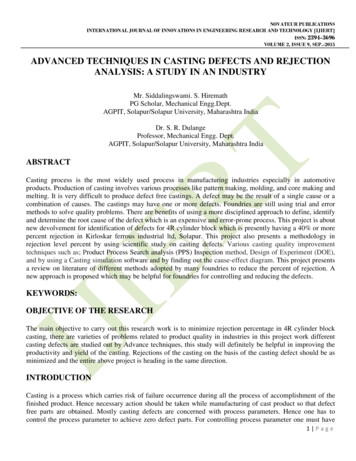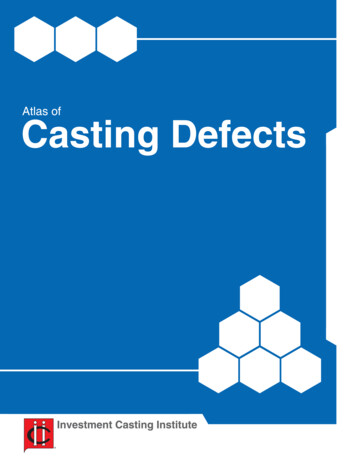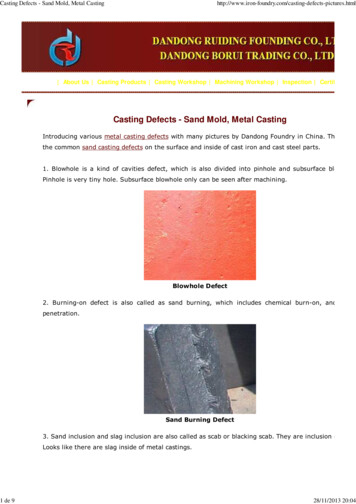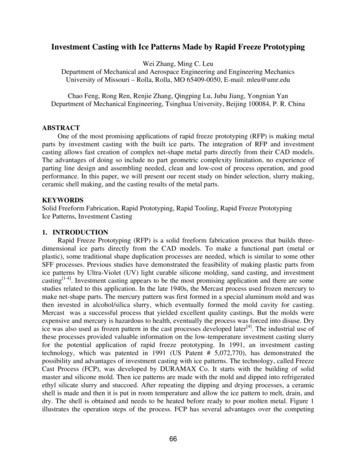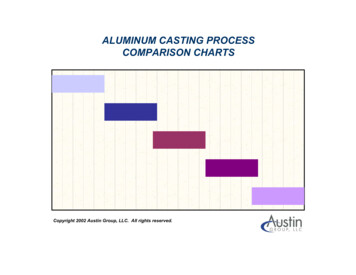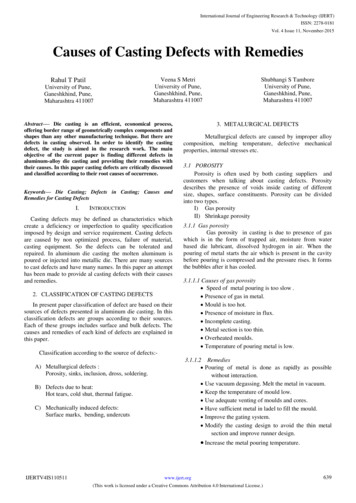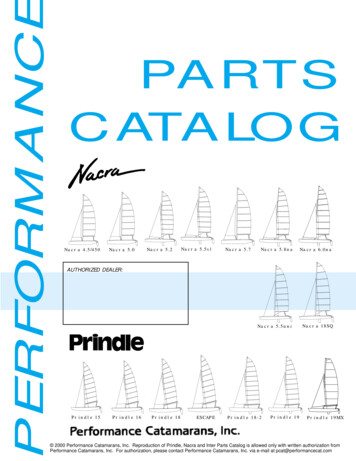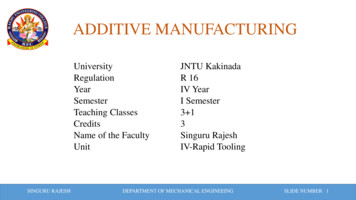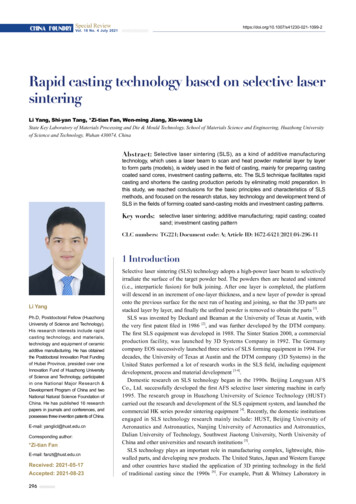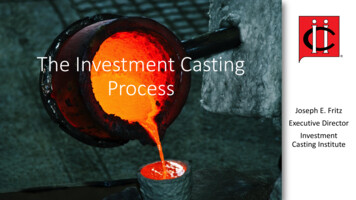
Transcription
The Investment CastingProcessJoseph E. FritzExecutive DirectorInvestmentCasting Institute
Background Originally developed by ancient Chinese and Egyptianculture to create artwork Primarily used for art until development of the jet turbineengine at the end of World War II Since that time it has become an enabling technology intoday’s top industries Aerospace and DefensePower GenerationAutomotiveOil and GasSpace Exploration Medical / OrthopedicsAgricultureConstructionCommercial andConsumer products
Some of the Benefits of Investment Casting Superior surface finish Complex, near net geometries Wide range of alloys Fine detail
The Investment Casting Process
Creating a Wax Pattern In today’s manufacturing world, wax patterns are typically made byinjecting wax into a metal tool or “die” With the evolution of Additive Manufacturing, patterns can be printed In the art community, one of a kind pieces are carved by the artistfrom wax blocks For multiple castings, a silicon tool is usually made from the artist’s sculptureand wax is injected or poured into the resulting cavity
Wax Tree Assembly It is typically uneconomical to make small parts one at a time,so wax patterns are typically attached to a wax “sprue” The sprue serves two purposes1. Provides a mounting surface to assemble multiple patterns into a singlemold, which will be later filled with alloy2. Provides a flow path for the molten alloy into the void created by the waxpattern(s) The wax between the pattern(s) and the sprue are called “Gates”,because they throttle the direction and flow of the alloy into the voidmade by the pattern
Shell Building The next step in the process is to build a ceramic shellaround the wax tree This shell will eventually become the mold that metal ispoured into To build the shell, the tree is dipped into a ceramic bath or “slurry” After dipping, fine sand or “stucco” is applied to the wet surface The mold is allowed to dry, and the process is repeated a number oftimes until a layered (or laminated) ceramic mold, capable to undergothe stresses of the casting process, has been built
Dewax / Burnout Before pouring metal into the mold, the wax is removed This is typically done using a steam-dewax autoclave,which is like a large, industrial pressure cooker Another method is the use of a flash fire oven, whichmelts and burns off the wax Many foundries use both methods in concert Autoclave removes the majority of the wax, which can be reconditioned andreused Flash fire burns off residual wax and cures the shell, readying it for casting
Metal Pouring Before the metal is poured into the ceramic mold or“shell”, the mold is preheated to a specific temperatureto prevent the molten alloy from solidifying or “freezing off”before the entire mold is filled Alloy is melted in a ceramic cup (called a crucible) using aprocess known as induction melting A high frequency electric current creates a magnetic field aroundthe alloy, generating electric fields inside the metal (eddy currents) The eddy currents heat the alloy due to the material’s electrical resistance When the alloy reaches its specified temperature, it is poured into themold, and the mold is allowed to cool
Shell Knock Off Once cool, the shell material is removed from the metal This is typically done via mechanical means Hammer High Pressure Water Blast Vibratory Table Shell removal can also be accomplished chemically, using a heatedcaustic solution of either potassium hydroxide or sodium hydroxide,but this approach is being phased out due to environmental andhealth concerns
Cut Off Once the shell material has been removed, the parts arecut off the sprue and the gates are ground off Part cut off can be done manually Chop saw Torch Laser (limited applications) Parts can also be cut off using automation, that is, the mold can besecured using a fixture on a programmable cut off saw
Individual Castings Once the parts are removed from the sprue, and the gates removed,the surface can be finished via a number of means Vibratory/Media finishing Belting or hand grinding Polishing Finishing can be done by hand, but in many cases it is automated Parts are then inspected, marked (if required), packaged and shipped Depending on the application, the parts can be used in their “netshape” or undergo machining for precision mating surfaces
Summary From Egypt and China to modern day manufacturing, investmentcasting has evolved from an art to a high technology enabler In our everyday lives, investment castings can be found all around us
Questions?Call the Investment Casting Instituteat 201-573-9770.
The Investment Casting Process Joseph E. Fritz Executive Director Investment Casting Institute. Background Originally developed by ancient Chinese and Egyptian culture to create artwo


